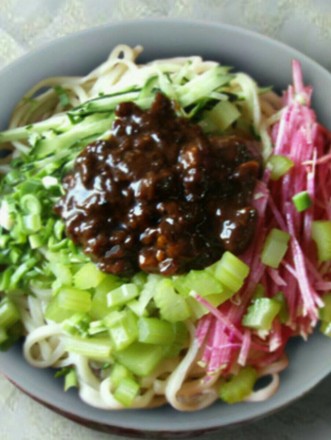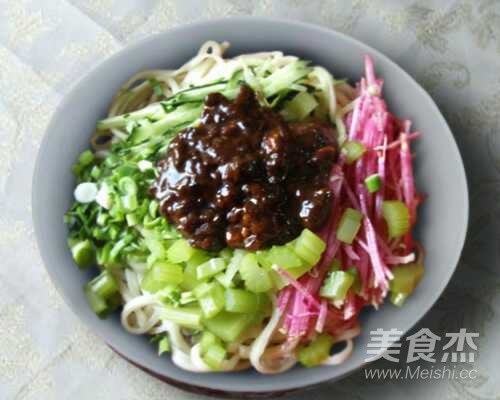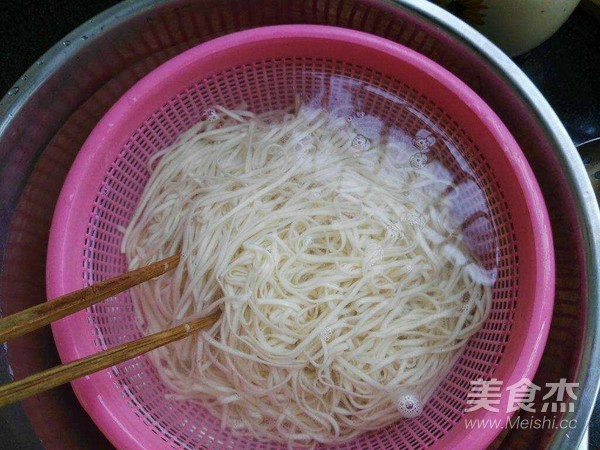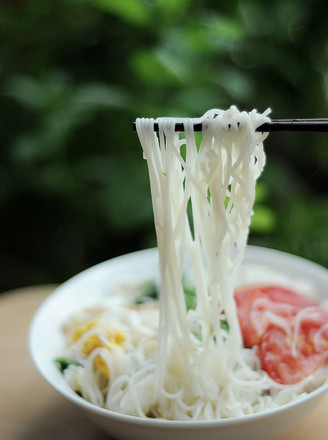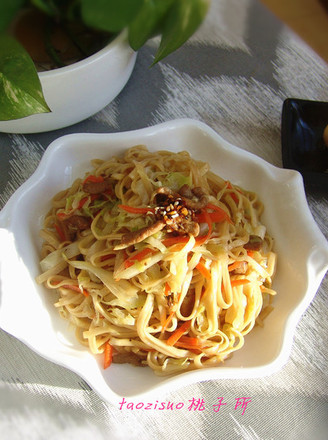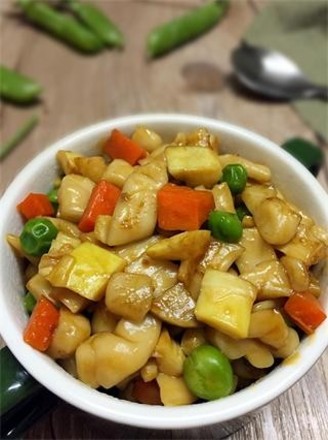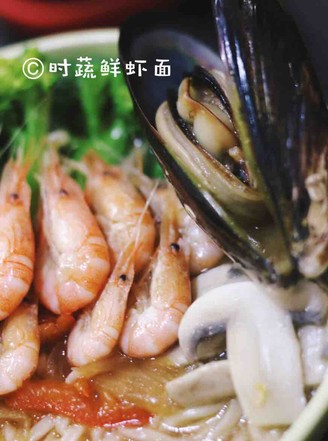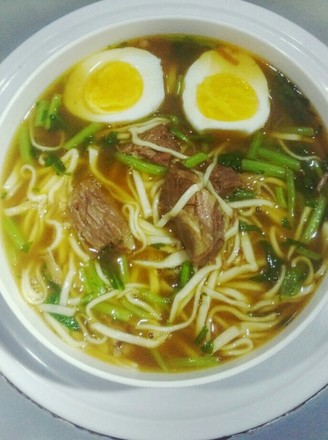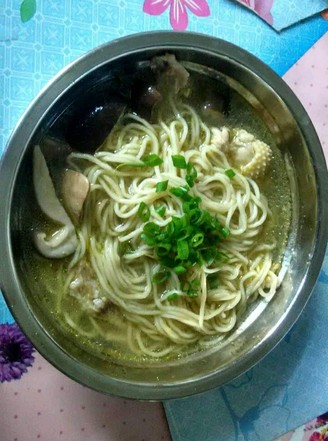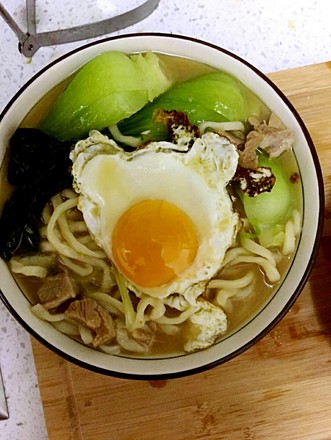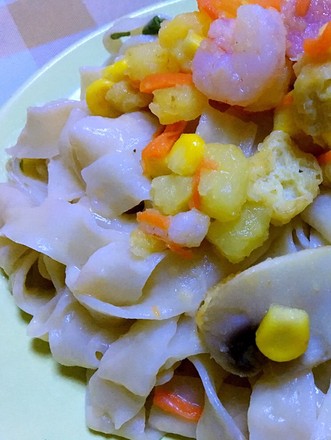Fried Noodles
1.
There are four basic positions, lean pork and fatty pork, with a ratio of 1:1 to 1:2. Chop the green onions and mince the ginger. The dosage should not be too conservative. The dosage of onion and ginger should be about 1:1. In addition, if you prefer something more intense, you can prepare star anise and cinnamon here.

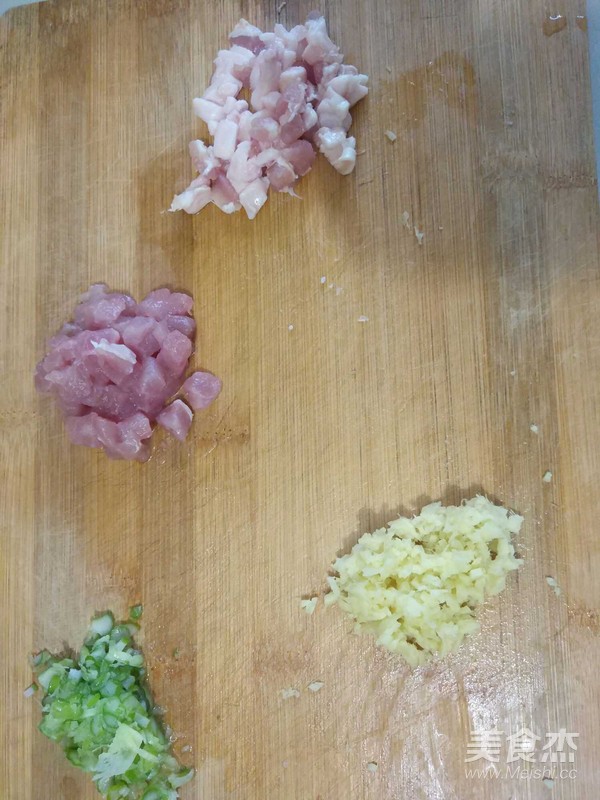
2.
Put the oil in the hot pan. The amount of oil should be more than less. After the oil temperature rises, keep the pot on a medium-to-small fire. Do not wait until the oil temperature is overheated. If you have prepared star anise and cinnamon, put in star anise and cinnamon first, stir out the taste and remove it. If you don’t like the flavour to be too heavy, add the fat pork directly, and add the lean pork when it starts to be translucent. After the color is completely changed, continue for a while, then add the minced ginger and stir until the minced ginger is dry, but do not stir, add chopped green onions at this time and stir until golden brown. This process needs to pay attention to mastering the cooking sequence of the materials and the heat of the preparation.

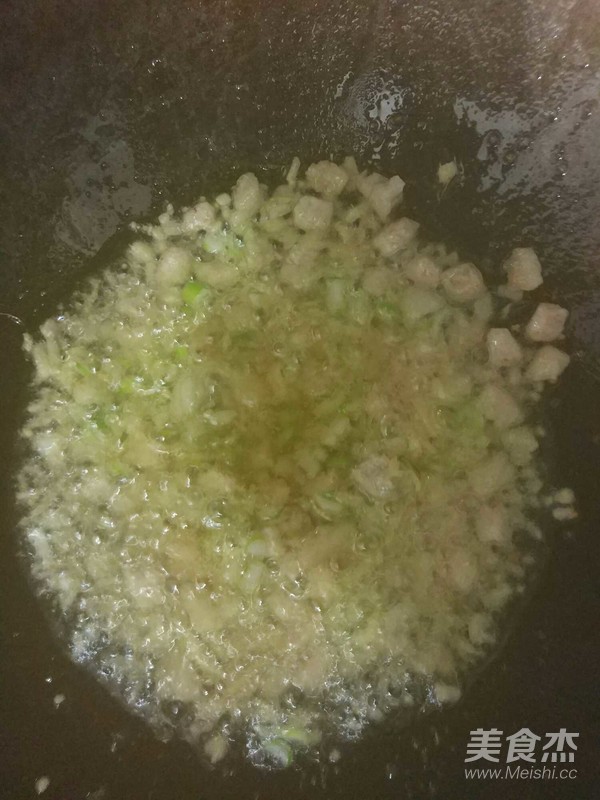
3.
The chopped green onions are golden yellow and start to be put into the sauce. Here I will mainly tell you the usage characteristics of various sauces and the differences from the mainstream fried sauce methods in various regions. Remember to read carefully. The composition of the sauce is 4+1. The so-called 4 refers to Beijing yellow sauce (also divided into thin yellow sauce and dry yellow sauce), Beijing sweet noodle sauce (the dipping material for Beijing roast duck), Tianjin noodle sauce (the texture is similar to Beijing sweet noodle sauce, but the taste It is salty), soybean paste (one of the main condiments in Northeast China), and 1 refers to light soy sauce.

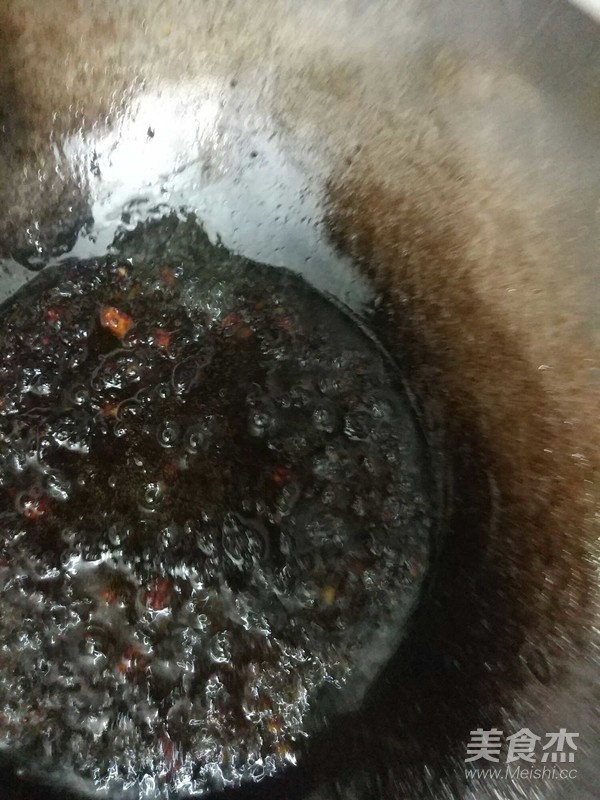
4.
Fried sauce is divided into two production processes: fried and boiled. The former is to wrap the sauce in oil and make it by deep-frying. The latter is to dilute the sauce with water and simmer the thin sauce in a similar way to stewing until it becomes thick. . The final product of the latter is more diluted and it is easy to mix when mixing noodles. The former product is more viscous and firmer, and the taste is more fragrant when fried. One of the most famous fried noodle restaurants in Beijing uses the former fried method. I am also used to it. Here. The choice of various sauces. Generally, the old Beijing practice uses Beijing yellow sauce as the base. It is recommended to choose thin yellow sauce and add half to one portion of Beijing sweet noodle sauce. According to personal tastes, if it is really not sweet at all like

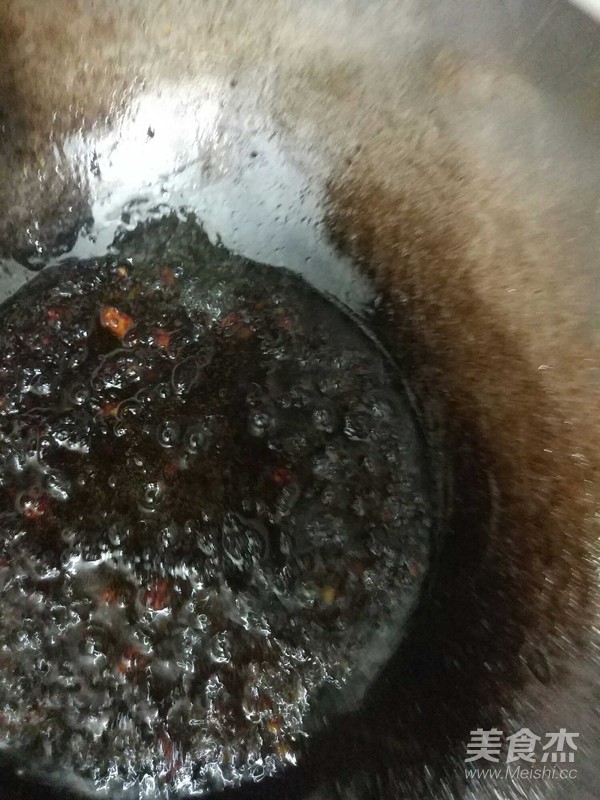
5.
Then use Tianjin salty noodle sauce instead of Beijing sweet noodle sauce, for example, one part of old Beijing thin yellow sauce, one part of Tianjin salty noodle sauce, and then add half to one portion of soybean paste. One of the main functions of soybean paste is to reduce the color and reduce the color. Flavor, among the 4 kinds of sauces, soybean sauce is the lightest in color and the lightest in taste. No sugar or salt is added during the making of fried sauce, so the taste, color and dilution are adjusted by the different proportions of these sauces. Yes, if you use Beijing yellow sauce for your sauce, don’t add light soy sauce. Some methods add light soy sauce for coloring purposes. The color of Beijing yellow sauce is the heaviest here, and the other is Beijing sweet noodle sauce. Don't and tianjin


6.
The salty noodle sauce appears together, let me give you a few examples for your understanding. Serving sauce 1: 1 part of Beijing thin yellow sauce, half of Beijing sweet noodle sauce, half of soy sauce. Serving sauce 2: 1 part of Beijing thin yellow sauce, 1 part of Beijing sweet noodle sauce. Serving sauce 3: 1 part of Beijing thin yellow sauce, 1 part of Tianjin salty noodle sauce, 1 part of soy sauce. Serving sauce 4: 1 part of Tianjin salty noodle sauce, 1 part of soybean paste, appropriate amount of light soy sauce. Note that light soy sauce is generally only suitable for use when the sauce is light in color and the sauce is made by stewing. I personally don't usually use it. After the sauce is prepared, stir it with a spatula to avoid sticking to the pot. When the color becomes darker and the texture thickens, it can be out of the pot.

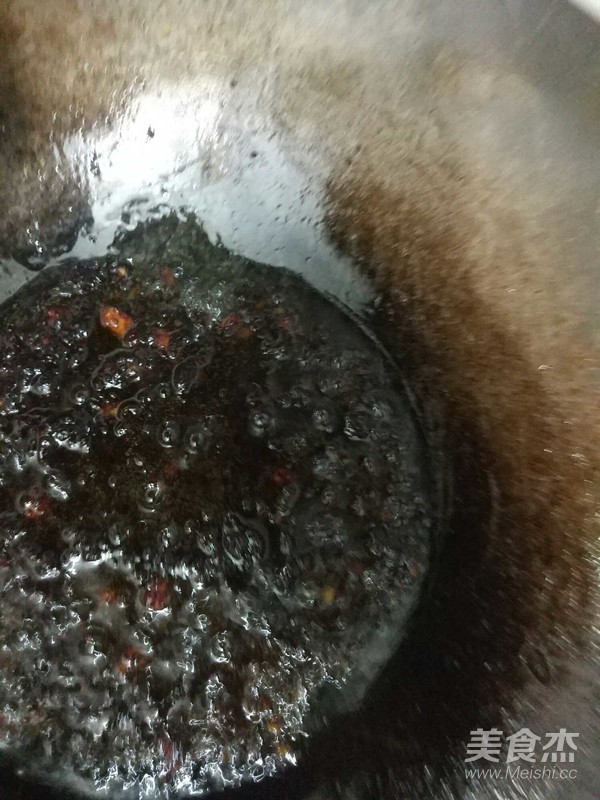
7.
Commonly used dishes (side dishes) include shredded Chinese cabbage and blanched water, shredded cucumber, diced celery and blanched water, chopped chives, blanched bean sprouts (mung bean sprouts are recommended, soy bean sprouts are more gluten), heart is beautiful Shred the radish, shred the carrot and blanch, soak the soybeans and green beans in water and cook. Of course, it will be garlic in the end, but it all depends on personal preference.
8.
After the noodles are cooked, put them in cold water for a while, which is what we call the pot, and finally put them on the plate.
Tips:
The fried sauce in the finished picture is made with one Beijing yellow sauce, one Tianjin noodle sauce, and one soybean sauce. For health, although you can't eat more oil, you must cover the sauce with oil. In addition, the sauce will absorb some more oil after it is packaged. If there is anything you don’t understand, please ask questions.

